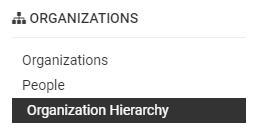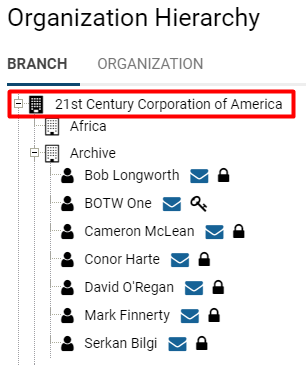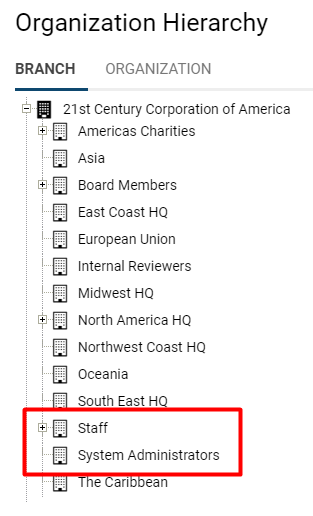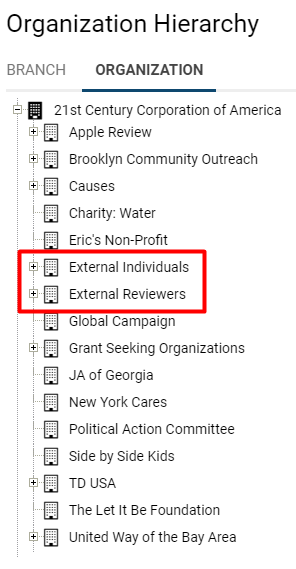Difference between revisions of "The Root Company"
(→Examples) |
(→Examples) |
||
| Line 19: | Line 19: | ||
:* The '''System Administrator '''and '''Staff '''folders are both indicative of organizations ''internal'' to the root organization | :* The '''System Administrator '''and '''Staff '''folders are both indicative of organizations ''internal'' to the root organization | ||
Below is an example of an external hierarchy.: | Below is an example of an external hierarchy.: | ||
| − | |||
::: [[File:externalhierarchy.png|200px|border]] | ::: [[File:externalhierarchy.png|200px|border]] | ||
:: | :: | ||
| − | ::* Note that organizations named as '''External Reviewers '''or '''External | + | ::* Note that organizations named as '''External Reviewers '''or '''External Individuals '''is indicative of organizations ''external'' to the root organization |
| + | |||
Best practice is to define sub-branches of your root organization to appropriately and easily categorize [[Users|users]]. | Best practice is to define sub-branches of your root organization to appropriately and easily categorize [[Users|users]]. | ||
Revision as of 09:26, 4 June 2019
Definition
The root organization is created when a copy of SmartSimple is initially activated and the first Global User Administrator is associated with this organization. The root organization is displayed at the root of both the Internal and External organization hierarchy, representing the instance.
How to Find the Root Organization
- 1. Click the 9-square icon on the top right of the homepage to access your menu.
- 2. Under Organizations, select Organization Hierarchy.
- 3. The current organization hierarchy and users are displayed. The root organization is the first organization listed.
The first tab of your organization hierarchy lists Internal contacts, while the second tab lists External contacts. In the above example, the internal hierarchy is titled Branch and the external hierarchy is titled Organization. The organization terminology is variable depending on the SmartSimple instance; however, the root organization will always appear first on both the internal and external lists.
Examples
Below is an example of an internal hierarchy:
-
- It is helpful to have an internal organization associated with all System Administrator; this way, you have a clear visual of exactly who is able to have high levels of access to change and modify your SmartSimple instance
- The System Administrator and Staff folders are both indicative of organizations internal to the root organization
Below is an example of an external hierarchy.:
Best practice is to define sub-branches of your root organization to appropriately and easily categorize users.



